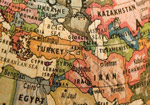IndigoVision’s IP video technology is at the heart of a ground breaking ‘Data Warehousing’ and surveillance system for the City of Calgary, Canada.
Shifty eyes long have been thought to signify a person’s problem telling the truth. Now a group of University of Utah researchers are taking that old adage to a new level.
AtHoc Inc., provider of network-centric emergency mass notification systems, recently announced that the United States Army Garrison Walter Reed and Walter Reed Army Medical Center (WRAMC) will deploy its AtHoc IWSAlerts system to help alert personnel in the event of an emergency and to rapidly communicate mission-critical information.
Department of Homeland Security Secretary Janet Napolitano recently delivered remarks highlighting the department’s ongoing efforts to bolster security and increase resiliency at high-risk chemical facilities through the Chemical Facility Anti-Terrorism Standards (CFATS) program at the 2010 Chemical Sector Security Summit.

Homeland Security never sleeps. It is a 24/7 operation that can’t afford downtime or periods of reduced readiness. Thermal security cameras have become the visual surveillance sensor of choice for these demanding, high-security missions. For many years, thermal cameras have proven themselves to be the best 24-hour visual surveillance imaging solutions available, and today they are a vital component in our country’s vital homeland security mission, helping to secure our borders, airports, sea ports, nuclear facilities and other critical infrastructure installations.
ASIS International, the world’s largest organization for security management professionals, is now an authorized General Services Administration (GSA) Federal Supply Schedule vendor of educational programs, materials and exhibits and seminars for security professionals.
The National Institute of Standards and Technology (NIST) has been designated by Federal Chief Information Officer Vivek Kundra to accelerate the federal government’s secure adoption of cloud computing by leading efforts to develop standards and guidelines in close consultation and collaboration with standards bodies, the private sector and other stakeholders

A new video surveillance system currently being developed by the Department of Homeland Security’s Science and Technology Directorate (S&T) may soon give law enforcement an extra set of eyes. The Imaging System for Immersive Surveillance (or ISIS) takes new video camera and image-stitching technology and bolts it to a ceiling, mounts it on a roof, or fastens it to a truck-mounted telescoping mast.
The North American biometrics market is likely to experience a steady growth rate, with national ID projects, e-Passports, and other security projects spearheading market growth according to new research from Frost & Sullivan.
Firetide Inc., a provider of wireless infrastructure mesh networks, recently announced a partnership agreement with Thales Portugal S.A., a leading global technology systems integrator, to deploy a real-time, wireless mesh video surveillance network in Mumbai, for MMOPL. The network will be deployed to provide onboard video surveillance and broadcast of text message to onboard display.

Department of Homeland Security Secretary Janet Napolitano has halted funding for the Secure Border Initiative-Net, a system of towers, cameras, radar and sensors initially hailed as "the most comprehensive effort in the nation's history" to assist northern and southern border agents with curtailing illegal immigration.
- By Sherleen Mahoney
- May 01, 2010
Facing the need for a scalable system with video recording and archiving, the Wayne County Sheriff’s Office in New York has updated its county jail’s video surveillance system with a hybrid analog/IP system that includes Ocularis Recorder NetDVMS and Ocularis Client software from OnSSI.
The events of Sept. 11 heightened the federal government’s attention to security procedures at chemical/petrochemical facilities and required officials at LyondellBasell to take a fresh look at methods used to secure their facilities.
Department of Homeland Security (DHS) Secretary Janet Napolitano recently announced two enhancements to federal facility security -- initiatives that further strengthen the Department’s ability to protect thousands of government buildings across the United States one week prior to the anniversary of the Oklahoma City bombing.
The Chemical Facility Anti-Terrorism Standards are complex and fairly disruptive. Few would argue that. The risk-based performance standards guidance alone is nearly 200 pages long, and many companies have had to re-allocate or hire staff, facilitate training and certification, and contemplate ways to re-imagine corporate processes in order to control access to chemicals of interest.
- By Marleah Blades
- Apr 13, 2010

In response to the failed Christmas Day bombing by Umar Farouk Abdulmutallab, the Transportation Security Administration has mandated enhanced screening measures at airports nationwide for U.S.-bound passengers traveling from or through state sponsors of terrorism and other countries of interest.
- By Sherleen Mahoney
- Apr 01, 2010

The biggest challenge in outdoor live surveillance for border patrol, Coast Guard and traffic control applications is atmospheric interference from fog, snow or haze. Existing fog cancellation devices are expensive and often require multiple cameras with individual adjustment to each camera.
- By Ralph C. Jensen
- Apr 01, 2010

Customs officials used to have to rely on traditional screening technologies that are ill-suited for the customs mission and have produced mixed results. Today, advanced imaging technology in the form of millimeter wave imagers and other devices are emerging as the newest tools in a customs officer's toolkit.
- By Dana Strawser, Troy Techau
- Apr 01, 2010

The rule of thumb in protecting government facilities is simple—any application with a large coverage area is a candidate for a video surveillance system, and that includes the perimeter. Since most government facilities have limited manpower for security-related tasks, with video surveillance systems, only a few people are needed to watch over areas that would be virtually impossible to patrol with 100-percent effectiveness.
- By Brian Leland
- Apr 01, 2010
Security Products magazine announced the winners of the 2010 Security Products’ GovSec Award today at GovSec, the Government Security Expo & Conference.